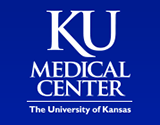Comparison of Collagenase Santyl Ointment With Antibiotic Ointment in the Outpatient Care of Minor Partial Thickness Burns
| Status: | Recruiting |
|---|---|
| Conditions: | Hospital |
| Therapuetic Areas: | Other |
| Healthy: | No |
| Age Range: | 2 - 75 |
| Updated: | 5/23/2018 |
| Start Date: | January 2014 |
| End Date: | December 2021 |
| Contact: | Jessica Reynolds |
| Email: | jreynolds11@kumc.edu |
| Phone: | 913-588-0068 |
By doing this study, researchers hope to learn if applying Santyl to the burn during the
healing process affects the appearance of the resulting scar.
healing process affects the appearance of the resulting scar.
Subjects who have minor, second degree burns may be enrolled in this study. Subjects will
receive either Santyl ointment or bacitracin ointment to apply to the burn until it heals.
Bandages will be used to keep the burn covered while it heals. Second degree burns generally
leave a scar. Once the burn heals, lotion and an appropriate bandage will be used to try to
minimize the appearance of a scar.
The study hypothesis is that burns treated with Santyl will have a better scar appearance
than burns treated with bacitracin.
Subjects enrolled in this study will make once a week visits to the University of Kansas
Medical Center outpatient burn clinic until the burn heals. The burn will be assessed for
healing at these visits. Once healed, visits to the clinic will be at 60 & 180 days, up to 6
months. At these visits, the appearance of the scar will be evaluated.
This study was originally funded by Smith and Nephew, but Smith and Nephew is no longer
providing support for the study.
receive either Santyl ointment or bacitracin ointment to apply to the burn until it heals.
Bandages will be used to keep the burn covered while it heals. Second degree burns generally
leave a scar. Once the burn heals, lotion and an appropriate bandage will be used to try to
minimize the appearance of a scar.
The study hypothesis is that burns treated with Santyl will have a better scar appearance
than burns treated with bacitracin.
Subjects enrolled in this study will make once a week visits to the University of Kansas
Medical Center outpatient burn clinic until the burn heals. The burn will be assessed for
healing at these visits. Once healed, visits to the clinic will be at 60 & 180 days, up to 6
months. At these visits, the appearance of the scar will be evaluated.
This study was originally funded by Smith and Nephew, but Smith and Nephew is no longer
providing support for the study.
Inclusion Criteria:
1. Provide written informed consent, which will consist of reading, signing, and dating
the informed consent document after the Investigator, sub-Investigator or other
designated study staff member has explained the study procedures, risks, and contact
information. For subjects not able to provide informed consent (e.g., minors), a
parent or legally authorized representative must provide consent. Assent must be
provided as required by the Institutional Review Board (IRB).
2. Have one or more acute burns which:
1. are thermal, chemical or electrical in etiology
2. in aggregate cover <10% total body surface area (TBSA)
3. are each equal to or less than 72 hrs old
4. are each no more than deep partial thickness (2nd degree)
5. are not visibly infected
3. Able to take in oral fluids.
4. Able to comply with the requirement for daily dressing changes, or have a caretaker
who is able to comply.
5. Willing to make all required study visits.
Exclusion Criteria:
1. Contraindications or hypersensitivity to the use of the test article or their
components (e.g., known hypersensitivity to bacitracin).
2. Embedded foreign bodies in the burn wound which cannot be immediately removed.
3. The burned tissue includes or is within 1 cm of the eye or genitalia.
4. Severe perioral burns.
5. Airway involvement or aspiration of hot liquids.
6. Suspicion of physical abuse.
7. Burn wound requires a skin graft.
8. Outpatient management of the burn wound is not appropriate.
9. Participation in another investigational clinical study within thirty (30) days of the
Screening Visit.
10. The Investigator may declare any subject ineligible for a valid medical reason.
Current or recent (< 6 months) history of severe, unstable, or uncontrolled
neurological, cardiovascular, gastrointestinal, hematological, hepatic, and/or renal
disease or evidence of other diseases based upon a review of medical history that, in
the opinion of the Investigator, would preclude safe subject participation in the
study.
11. Test articles are cost-prohibitive for subjects
We found this trial at
1
site
University of Kansas Medical Center The University of Kansas Medical Center serves Kansas through excellence...
Click here to add this to my saved trials
